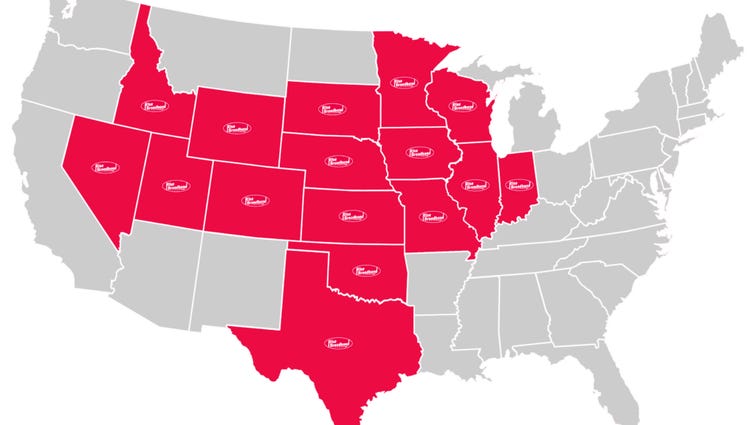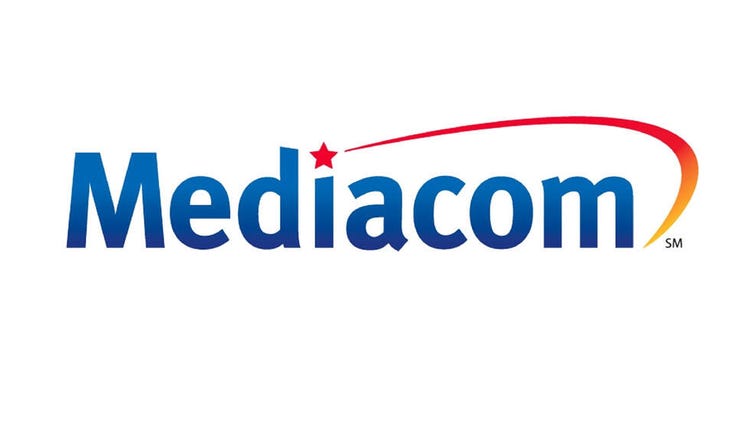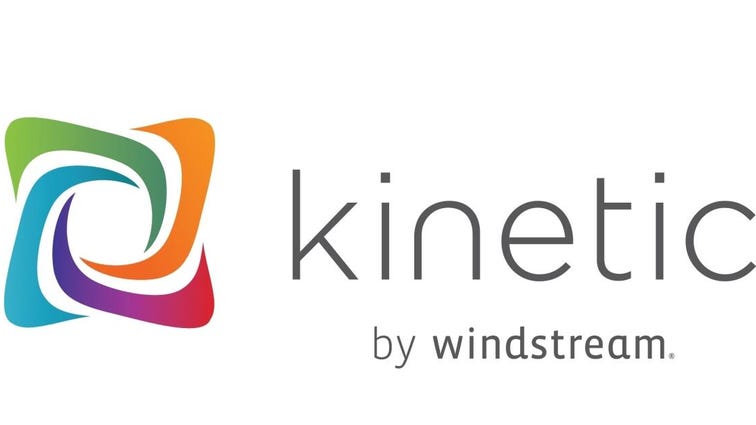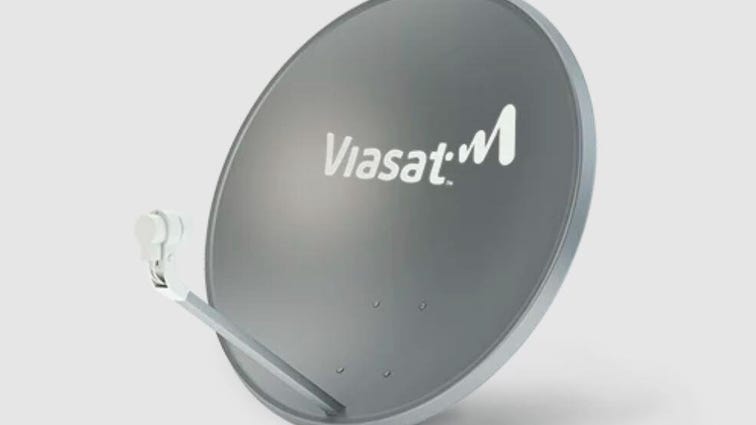How To Get Cable Internet In A Rural Area
Life away from the big city has its advantages, but the lack of internet options in your area can be one potential downside. For some, broadband service -- which is classified as download speeds of 25 megabits per second or higher and upload speeds of at least 3Mbps -- may not even be available at all. The Federal Communications Commissions and internet service providers hope to close the digital divide by expanding broadband connections for rural areas that have long gone underserved.
Satellite internet has historically been the go-to option for broadband service in rural areas, and in many parts, it still is. But other connection types, such as DSL, fixed wireless, cable internet and even fiber-optic service have become more widely available over the years. That means that those living in rural areas may not have to continue settling for satellite service.
If you're shopping for internet service in a rural area, it's important to know your options, however limited they may be, to ensure you're getting the best provider for your needs. To help you narrow down your potential choices, we've listed our picks for the best rural internet providers below. The featured providers were chosen based on factors including availability, pricing, data caps and customer satisfaction.
Rise Broadband: Best rural ISP overall

Rise Broadband
- Connection type: Fixed wireless
- Price range: $35-$70 per month
- Speed range: 5-50Mbps
- Data cap: 250GB, unlimited data options available
Rise Broadband is a leading fixed wireless internet provider with service available to around 5% of US households, many of which are in rural areas. Coverage spans 16 states, with Colorado, Idaho, Iowa, Illinois, Nebraska, Texas and Utah having the highest serviceability.
Similar to satellite internet, fixed wireless service from Rise Broadband requires no direct lines to the home, making it accessible to those in rural areas where cable, fiber-optic and even telephone lines do not reach. Unlike some satellite internet plans, however, Rise Broadband offers speeds up to 50Mbps, latency low enough to support online gaming and truly unlimited data options, all at relatively low pricing.
Rise Broadband is also a great choice for wireless internet in rural areas with Premium Wi-Fi and Premium Mesh Wi-Fi service available as add-ons to all internet plans.
Mediacom: Best rural cable internet provider

Mediacom
- Connection type: Cable
- Price range: $20-$80 per month
- Speed range: 60-1,000Mbps
- Data cap: 200-6,000GB
As a cable provider, Mediacom can deliver much faster speeds than DSL, satellite or fixed wireless service, but the service reach is more limited. Mediacom is available to just over 2% of US residents with service areas across much of the Midwest and South as well as parts of California and Delaware.
Still, if it's available in your area, Mediacom is one of the best cheap internet providers, with service starting at just $20 a month. Just know that the cheapest Mediacom plan only comes with 200GB of data, and going over the limit can add up to $50 to your bill. More data is available with higher-tiered plans, up to 6,000GB, but no Mediacom plan offers unlimited rural internet service.
T-Mobile: Best rural 5G home internet provider

T-Mobile
- Connection type : Wireless
- Price range: $50 a month
- Speed range: 25-110Mbps
- Data cap: Unlimited
The arrival of 5G is exciting news for your phone, but the technology could also improve home internet connectivity, especially if you're in a rural area. So far, T-Mobile has the greatest 5G availability with coverage reaching 30 million homes across 40 states. Around a third of those homes are in rural areas, according to a T-Mobile spokesperson.
If your address is eligible for T-Mobile 5G home internet, you'll have one plan option: $50 a month for the fastest speeds available. T-Mobile home internet service may occasionally fall back to 4G LTE service, which means speeds can dip and vary, but customers should expect speeds in the 25 to 100Mbps range. The plan also comes with no data caps or contracts, and equipment is included at no additional cost.
Kinetic by Windstream
Best rural fiber internet provider

Windstream
- Connection type: DSL, fiber optic
- Price range: $37-$67 per month
- Speed range: 25-1,000Mbps
- Data cap: None
Kinetic offers internet service in 18 states total across the Midwest, South and Eastern US. Though available primarily in rural and suburban areas, around a fifth of Windstream's network uses fiber technology.
Where fiber service is available, Kinetic customers can get download and upload speeds ranging from 25Mbps to up to 1,000Mbps, which is among the fastest speeds available from any major rural internet provider. These speeds make Kinetic ideal for streaming over wireless connections and online gaming, activities that are often a challenge with rural internet service.
Service areas not eligible for fiber service are likely to still have access to broadband-level speeds, as download speeds of 100Mbps or higher are available throughout more than half of the provider's DSL network. Regardless of the available network, Kinetic is a great choice for unlimited rural internet service, as all plans come with no data caps or contracts.
Kinetic Internet
Viasat: Best satellite provider

Viasat
- Connection type: Satellite
- Price range: $50-$150 per month
- Speed range: 12-100Mbps
- Data cap: 40-150GB (no hard data cap)
Satellite internet is the only internet connection type available throughout all 50 states. Elon Musk's Starlink and Amazon's Project Kuiper have injected a lot of interest into the category, and consumers should keep an eye on names like those in the coming years. That said, in areas where satellite internet is the only practical broadband option, residents will likely have their choice of Viasat or HughesNet.
Plan pricing is about the same with both providers, but Viasat plans come with more data and, in some locations, more speed, as well, with up to 100Mbps available in select areas. Additionally, Wi-Fi equipment rental is $5 a month cheaper than HughesNet.
Viasat also offers a new satellite/DSL hybrid service, Viasat Flex, intended to improve signal reliability and lower latency, two common pain points of satellite internet. The service is currently available at no immediate extra cost in rural areas within AT&T's DSL network.
Viasat
HughesNet: Best rural internet speed reliability

HughesNet
- Connection type: Satellite
- Price range: $60-$150 per month
- Speed range: 25Mbps
- Data cap: 10-50GB (no hard data cap)
Viasat's speeds can vary by location, but HughesNet's max download speeds of 25Mbps are available across all service areas. What's more, HughesNet customers are likely to actually get those speeds or higher when using a wired connection, according to the FCC's Measuring Broadband in America, Eighth Report. In the report, HughesNet outperformed all other participating ISPs in terms of actual vs. advertised speeds, with actual median speeds coming in at 150% or higher of the advertised speed.
HughesNet customers are likely to run into speed issues if they exceed the monthly data cap, however. HughesNet does not charge overage fees, meaning the service is technically "unlimited," but customers who go over their monthly data allowance will have to purchase more data or endure drastically reduced speeds for the remainder of their billing cycle.
HughesNet
CenturyLink: Best rural DSL internet provider

Robert Alexander/Getty Images
- Connection type: DSL, fiber optic
- Price range: $49-$65 per month
- Speed range: 1-940Mbps
- Data cap: None
The most recent American Customer Satisfaction Index report ranked CenturyLink higher than other top rural internet providers. While CenturyLink's score of 62/100 was not the highest of all ISPs, it does place above Windstream (61), Mediacom (60), Suddenlink (55) and Frontier (57).
With the exception of California and much of the Northeast, CenturyLink offers service in select areas across the country and is available to more than 16% of US residents. Those in rural areas serviceable for CenturyLink will likely only have access to DSL service, which can offer max speeds of anywhere from 1-100Mbps. CenturyLink DSL plans up to 100Mbps come with a price for life guarantee, unlimited data and no contract requirements.
Top rural ISP honorable mentions
These providers are also popular choices for internet service in rural areas but lack the speed, value or customer satisfaction marks to have made our list of the best.
- Frontier: Frontier DSL serves select rural areas in 25 states, but speeds are inconsistent and likely to not reach broadband speeds in most areas. Plans start at $38 a month and include unlimited data and equipment rental at no extra cost.
- EarthLink: EarthLink employs existing networks from providers including AT&T, CenturyLink and Verizon to deliver service, meaning speeds, connection quality and pricing can vary widely by location. Pricing typically starts around $45 a month for up to 25Mbps in most service areas.
- AT&T Fixed Wireless: Fixed wireless service makes up about 7% of AT&T's internet network. Where available, customers can get download speeds up to 25Mbps and 350GB data for around $60 a month.
- Verizon LTE Installed: Another fixed wireless service, Verizon LTE Installed makes use of Verizon's 4G network and can deliver speeds typically around 25Mbps starting at $40 a month for Verizon mobile customers.

Fixed wireless and satellite internet are most common in rural and suburban areas, because providers can cover a large area with a single antenna tower, or with a constellation of satellites -- and without needing to run cable to each home address.
Wireless Internet Service Providers AssociationRural internet FAQs
What are my options for internet in a rural area?
Satellite internet from HughesNet or Viasat is almost always going to be an option because of the wireless delivery, but satellite comes with a few downsides such as high pricing and low data allowances. Other wireless internet options for rural areas include fixed wireless service, from providers such as Rise Broadband and AT&T, and 5G home internet. Currently, T-Mobile offers the greatest 5G coverage in rural areas with speeds up to 110Mbps starting at $50 per month.
DSL is another popular internet option in rural areas, but speeds can vary significantly by location and provider. For the fastest rural DSL speeds, look to ISPs CenturyLink and Kinetic -- both offer speeds above the broadband threshold in more than 60% of their service areas. If cable internet is available, this will likely be your best bet for speed and reliability, but cable internet providers are often not as prominent in rural areas as satellite, wireless and DSL providers.
Why aren't there more rural internet options?
Installation and operation costs are the main factors preventing ISPs from expanding their networks into rural or suburban markets with low population density.
Satellite and fixed wireless services are common in rural areas because providers can broadcast internet signals over a large area without having to run physical cables to each address. DSL service is also common since the technology largely makes use of existing phone lines, which are readily available in many rural areas.
Coaxial (traditional "cable") and fiber-optic lines are less accessible in rural areas as the cost of installing lines is often much more than the provider will get in return. This means major cable internet providers like Cox, Spectrum and Xfinity, as well as fiber providers such as AT&T, Google Fiber and Verizon, are less inclined to expand service into rural areas.
Will internet service in rural areas get any better?
The pandemic shed a new light on the digital divide, sparking initiatives by the FCC and some of the top ISPs to bring better broadband availability to previously underserved areas, so there is definitely hope.
It's doubtful that cable or fiber providers will significantly expand into rural areas, but emerging 5G and satellite technologies could help close the digital divide in coming years. While AT&T, T-Mobile and Verizon are actively deploying 5G service across the US, Elon Musk and his satellite service Starlink are ramping up to completely disrupt the satellite internet market. Stay tuned for updates regarding these technologies and others that could have an impact on your home internet service, rural or otherwise.
More internet advice for 2021
- Best cheap internet providers of 2021
- Best VPN service for Amazon Fire TV Stick in 2021
- Best internet promotions right now
- Best internet providers for gaming
How To Get Cable Internet In A Rural Area
Source: https://www.cnet.com/home/internet/best-rural-internet/
Posted by: gibsonbronge38.blogspot.com

0 Response to "How To Get Cable Internet In A Rural Area"
Post a Comment